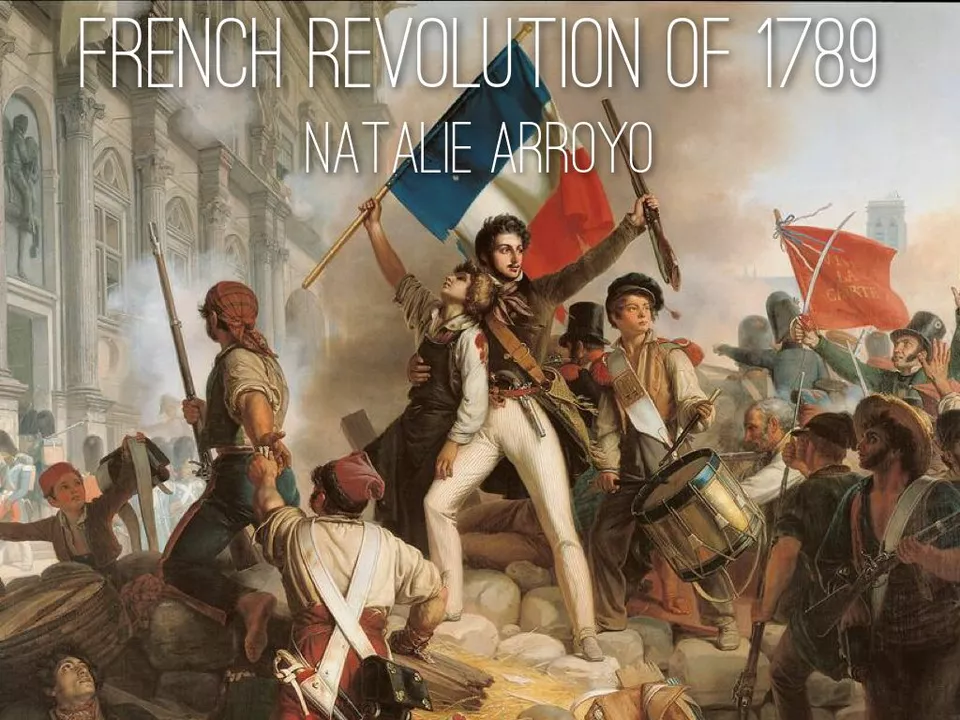
The Origins of the French Revolution
As we delve into the history of the French Revolution, it's essential to understand its origins. The French Revolution was a period of radical social and political change in France from 1789 to 1799, leading to the fall of the Bourbon monarchy and the rise of radical political factions. The revolution was fueled by economic hardship, social inequality, and a desire for greater political representation. But who was responsible for funding this massive upheaval? In this section, we'll explore the key players and circumstances that led to the revolution's outbreak.
The Financial Crisis and the Estates General
One of the main catalysts for the French Revolution was the country's financial crisis. France was heavily in debt following its involvement in the American Revolution and the extravagant spending of King Louis XVI and his queen, Marie Antoinette. To address this crisis, the king called for a meeting of the Estates General, a legislative body made up of representatives from the three main social classes: the clergy, the nobility, and the commoners. The Estates General had not met in over 150 years, and its convocation signaled the beginning of the revolution.
The Role of the Bourgeoisie
The bourgeoisie, or middle class, played a crucial role in financing the French Revolution. Many of these individuals were wealthy merchants, bankers, and professionals who were not part of the nobility but still wielded considerable economic power. They were frustrated with the existing social order, which limited their political influence and subjected them to high taxes. The bourgeoisie saw the revolution as an opportunity to gain greater political representation and to challenge the power of the aristocracy.
Foreign Financing and Support
While the bourgeoisie provided much of the financial backing for the revolution, they were not the only ones. Foreign governments, particularly those who were rivals of France, saw the revolution as an opportunity to weaken their adversary. Countries such as Britain, Spain, and the Dutch Republic provided financial and military support to the revolutionary cause, often through secret agreements and loans. This foreign backing played a significant role in sustaining the revolution and allowing it to achieve some of its goals.
The Role of Radical Political Clubs
As the revolution progressed, radical political clubs emerged as influential players in shaping its direction. Groups like the Jacobins and the Girondins were instrumental in pushing for revolutionary change and the overthrow of the monarchy. These clubs often received funding from their members, who included both wealthy bourgeoisie and radical intellectuals. The clubs used this money to fund propaganda campaigns, support like-minded political candidates, and even finance acts of violence and rebellion.
Taxes and Confiscated Wealth
As the revolutionary government took control of France, they implemented new taxes and seized the wealth of the aristocracy and the Catholic Church. This confiscated wealth helped to fund the revolution and allowed the government to maintain its power. The sale of church lands, in particular, generated significant revenue for the state, which was used to fund various revolutionary projects and initiatives.
Assignats: Revolutionary Currency
To address the financial crisis and fund the revolution, the French government introduced a new form of currency called the assignat. Assignats were paper money backed by the confiscated lands of the church and the nobility. Initially, this new currency helped to stabilize the economy and allowed the government to fund its operations. However, as the revolution progressed and the government continued to print more assignats, they quickly lost their value, leading to rampant inflation and economic instability.
The Reign of Terror and Its Impact on Financing
The Reign of Terror, a period of extreme violence and repression during the French Revolution, had a significant impact on the revolution's financing. Many wealthy individuals who had initially supported the revolution found themselves targeted by the radical factions in power. Their property was seized, and some even faced execution. As a result, these individuals and their financial resources were no longer available to support the revolution, leading to an even greater reliance on foreign financing and the sale of confiscated assets.
Conclusion: A Complex Web of Financing
In conclusion, the French Revolution was financed through a complex web of sources, including the bourgeoisie, foreign governments, radical political clubs, new taxes, and the sale of confiscated wealth. These sources helped to fund the revolution and allowed it to achieve many of its goals. However, the reliance on these various sources also contributed to the revolution's ultimate downfall, as it led to economic instability and a loss of support from key segments of the population. Understanding who bankrolled the French Revolution is essential to understanding the complex and tumultuous nature of this critical period in history.
Write a comment